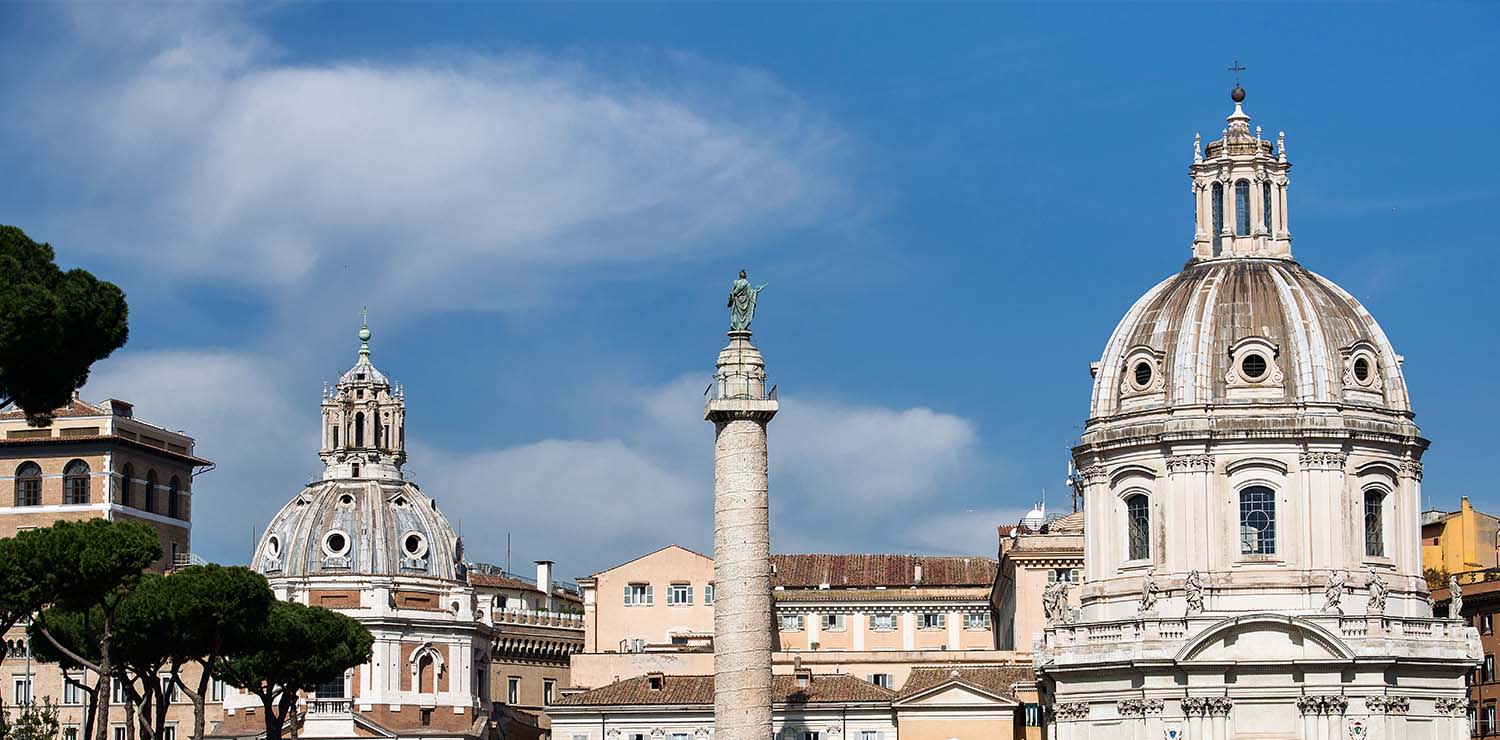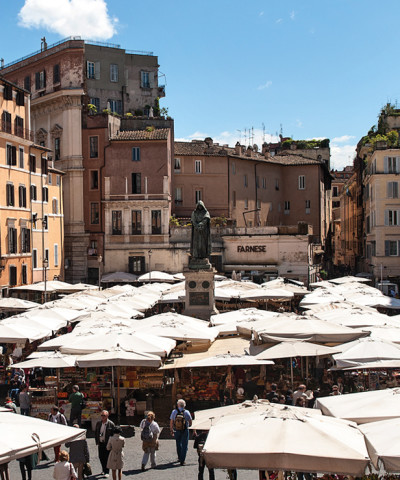The grandeur of victory
The Trajan’s Column. A masterwork of art and technique since a.d. 113
It has withstood pillaging, barbarian invasions, plundering and war and it is still there, after more than one thousand and nine hundred years, dominating with its height of almost forty meters what remains of the ancient Forum of Trajan.
Trajan’s Column, erected by the emperor from whom it takes its name, was inaugurated in A.D. 113 to celebrate the conquest of Dacia, a region of Eastern Europe that corresponds to the current Romania and part of Bulgaria and Hungary.
It is universally known to be the first spiral column in history, later copied by Marcus Aurelius and Justinian and, much later, by Napoleon, and is, to all intents and purposes, one of the most famous commemorative monuments in the world.
The column is considered by scholars to be the most avant-garde point of arrival in the history of Roman historical reliefs and is also considered the monument that represents the independent and original artistic expression of Roman art, in respect to any previous monument. The Column was designed for the Forum of Trajan and stood behind the lost Basilica Ulpia. It is very likely that from the terraces of the basilica you could have had a close view of the magnificent frieze, which is, in any case, still readable without the need to circle around the column, since the overlapping of the scenes in the different spirals seems to follow a coherent logic. Thanks to the Fasti Ostienses we know that the inauguration date was May 12, the narrative instead is likely to have been developed from the lost Commentaries written by Trajan in which he described the war in Dacia in the years between A.D. 101 and 106. In addition to containing the ashes of the emperor and commemorating his deeds, an inscription recalls the height of the hill that once stood in that place, and that was excavated and removed to make room for the construction of the forum.
The Column has remained standing through the centuries despite the constructions and destructions that occurred over time. The only substantial modification was carried out under Pope Sixtus V, when in 1588 he had the bronze statue of St. Peter placed on top, replacing the lost bronze statue of Trajan.
The internal spiral staircase is now perfectly preserved, it has 43 window slits and 182 steps; among its illustrious visitors, there was even Goethe, who in 1787 admired the view of Rome seen from the top. Today it is not very easy to access, but its measurements are impressive: the column itself is 29.78 meters high and consists of 18 great blocks of Carrara marble, each of which weighs approximately 40 tons and has a diameter of 3.83 meters. It reaches about 39.86 meters if you include the tall pedestal at the base and the statue at the top. The order of the column is Doric, while the capital is decorated with an egg-and-dart frieze and a crown-shaped base.
If we observe the monument from below, we can see the richly detailed decorations of the pedestal which is adorned on three sides with Dacian arms and armor in bas-relief while on the side facing the Basilica Ulpia, an inscription supported by Victories recalls the reasons for the construction of the monument, while four eagles decorate the four corners of the pedestal. Under the inscription, there is the door leading to the room that once contained the ashes of Trajan and his wife Plotina.
Above the pedestal, the 200 meters of the historiated frieze start and wind 23 times around the shaft with 150 scenes animated by approximately 2500 figures. According to scholars, the campaigns in Dacia are described in chronological order.
The narration unrolls from bottom to top, and from left to right, beginning with the Romans crossing the Danube on a pontoon bridge.
The scenes of combat are interspersed with marches, bridge constructions, roads, camps and scenes in which the Emperor Trajan himself appears sixty times, always depicted with classical composure and seriousness and proportionately larger than the other figures, according to the symbolism typical of historical reliefs. The scenes are set in realistic contexts, with rocks, trees and buildings in which the true protagonist is valor, the virtue of the Roman army. While great expressive intensity is found in some scenes, such as that of the Dacian women torturing Roman prisoners or in the presentation to Trajan of the heads of the Dacians, great solemnity is found, however, in the scene of the submission of the Dacians at the end of the first campaign in the presence of the emperor. In order to fully enjoy the vision of this important monument, it is advisable to visit it early in the morning when, in the silence of the slumbering city, you can still hear, through the images of the column, the echoes of the extraordinary deeds of Rome.











